4 Artists Share about the Relationship with their Cars

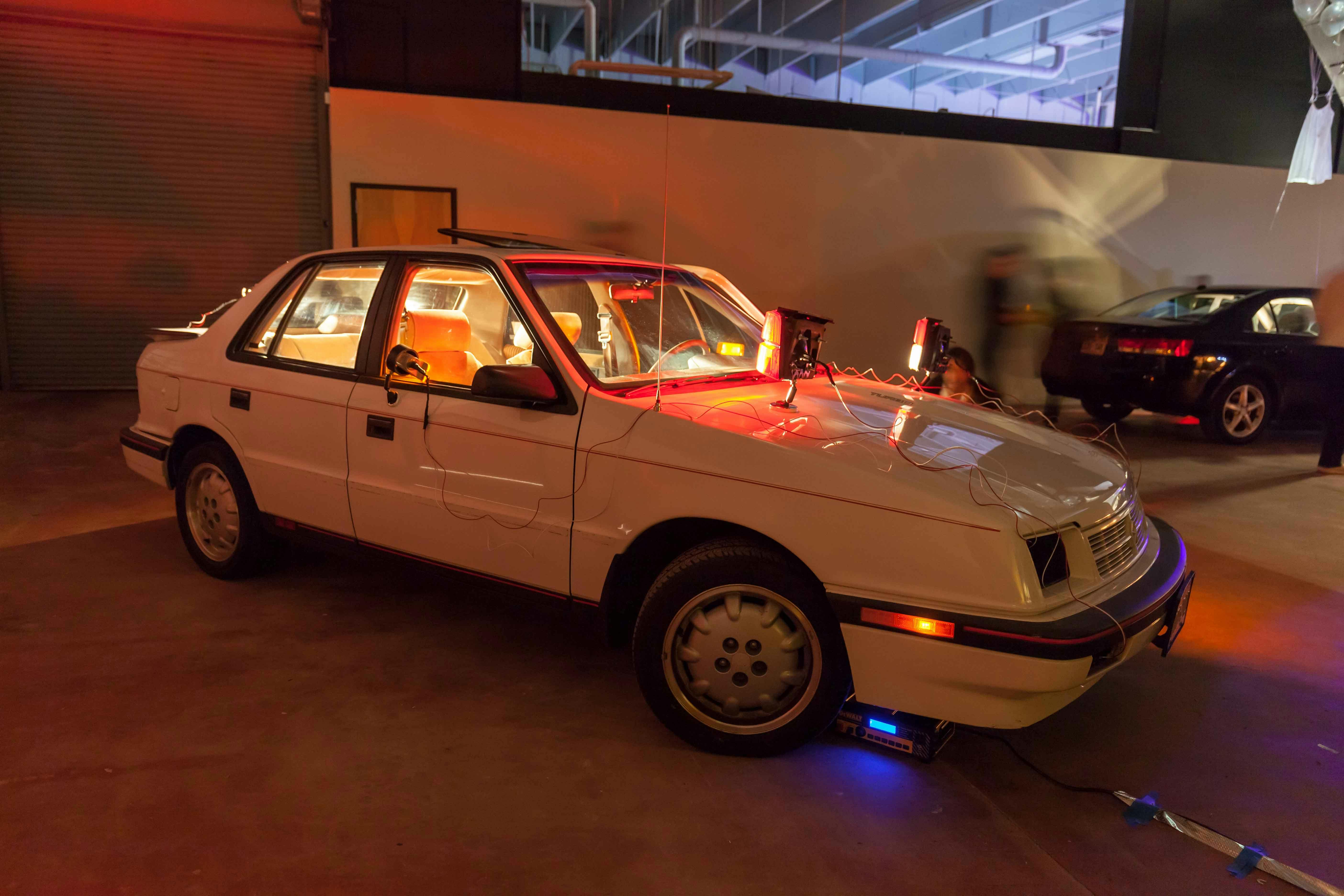

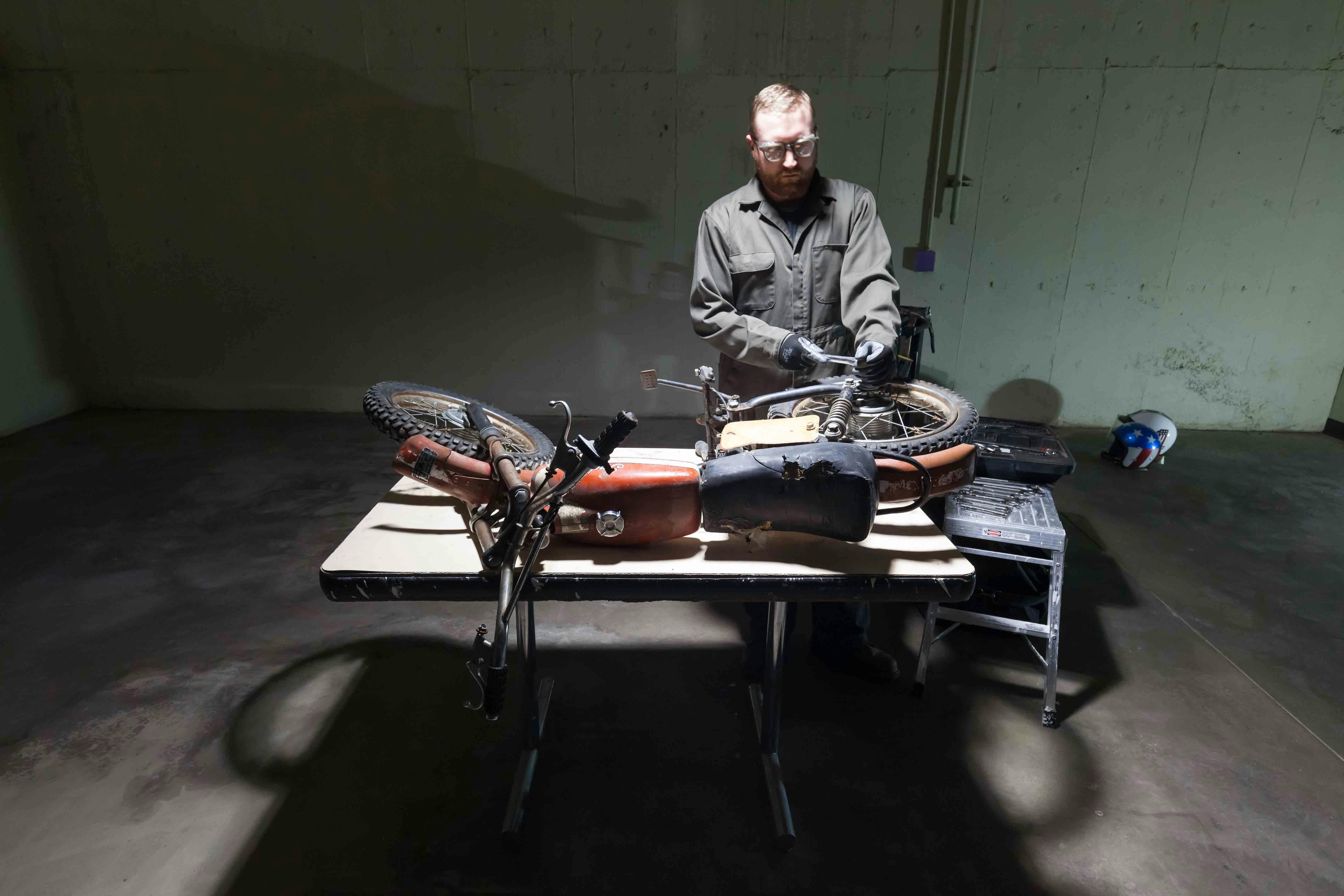
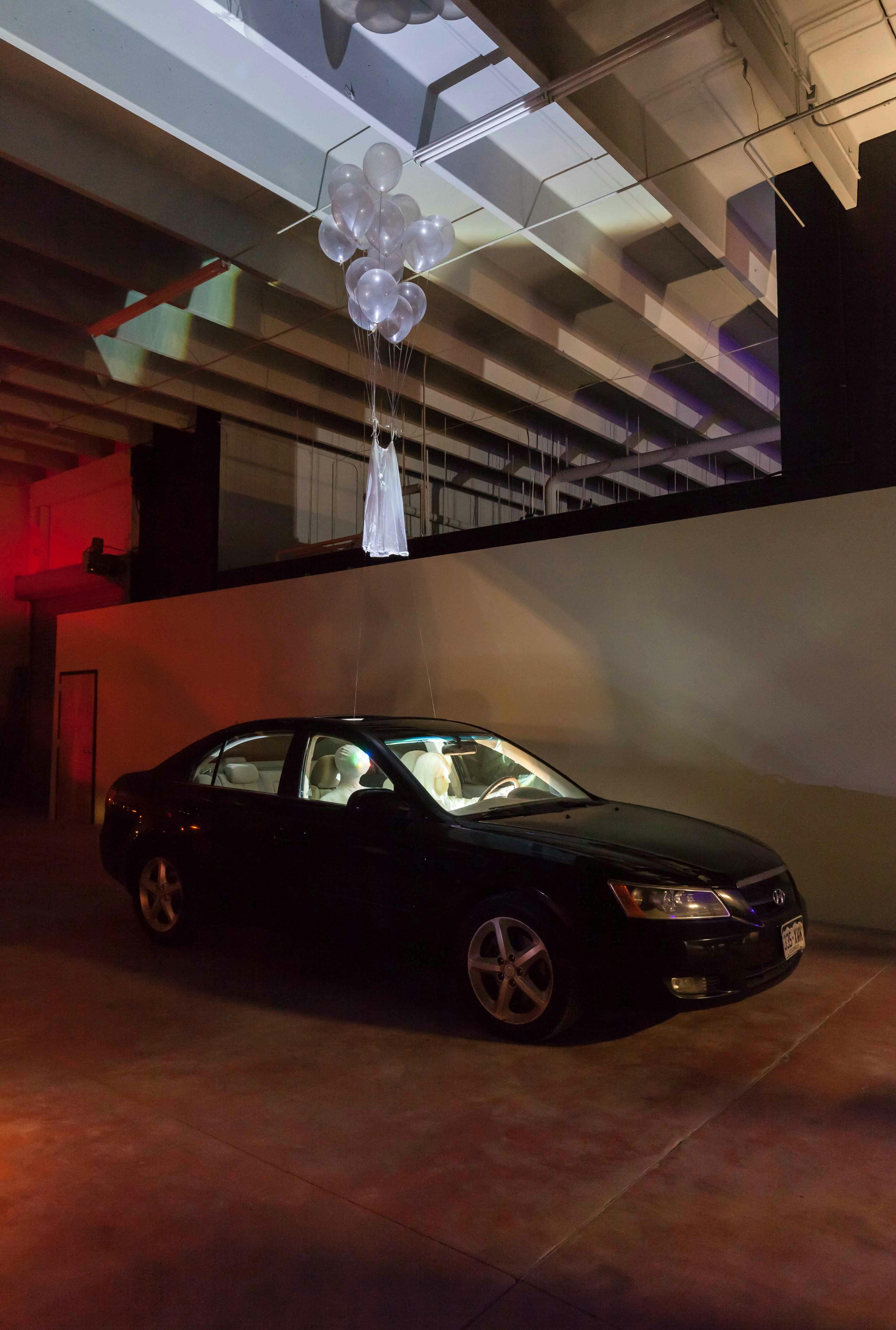
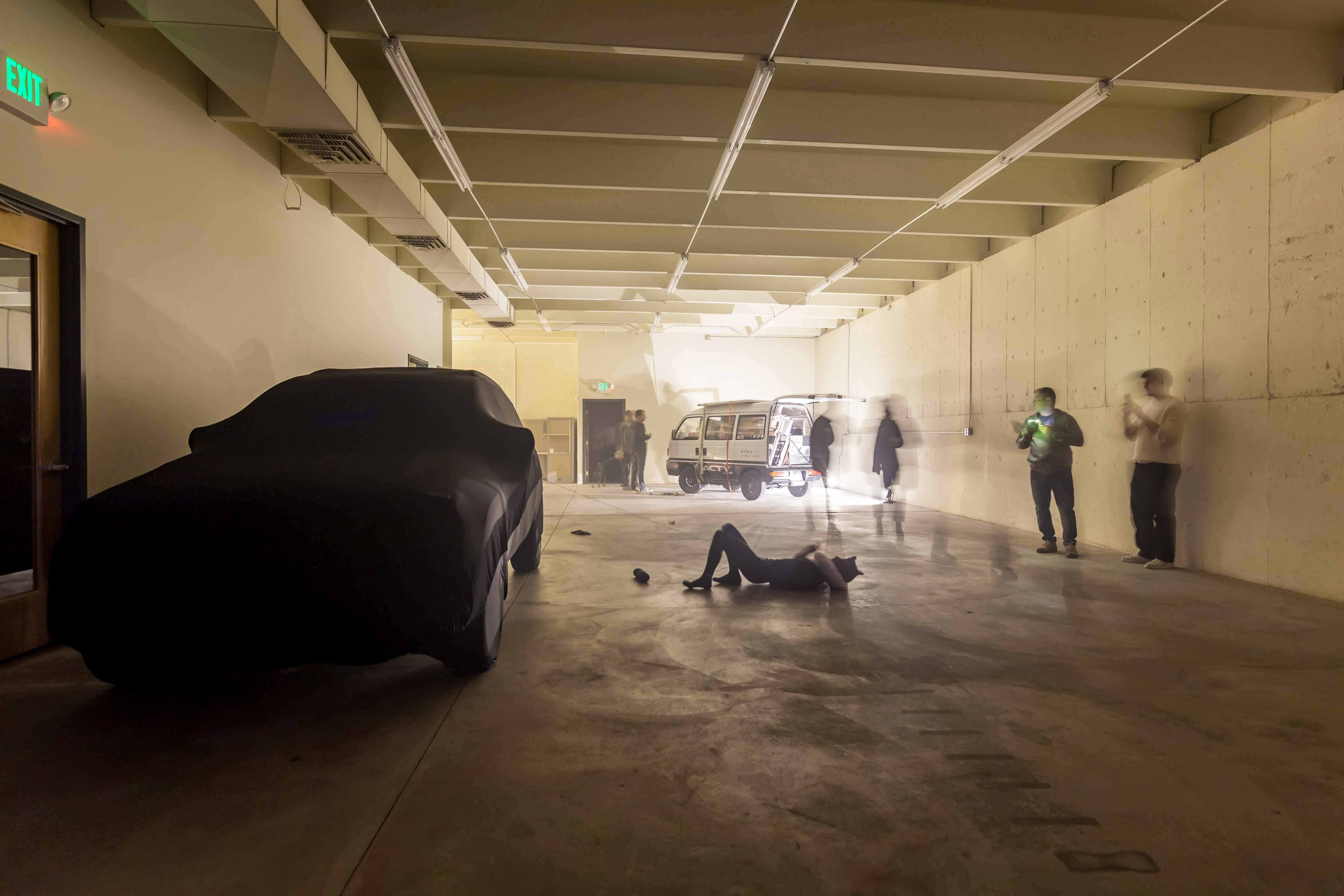
We interviewed four artists who participated in the 2nd Drive-In: Car Culture—Graham Eschen, Donald Fodness, Chrissy Espinoza, and Theresa Anderson—who each provided insight about the vehicle they used in the one-night experimental exhibition.
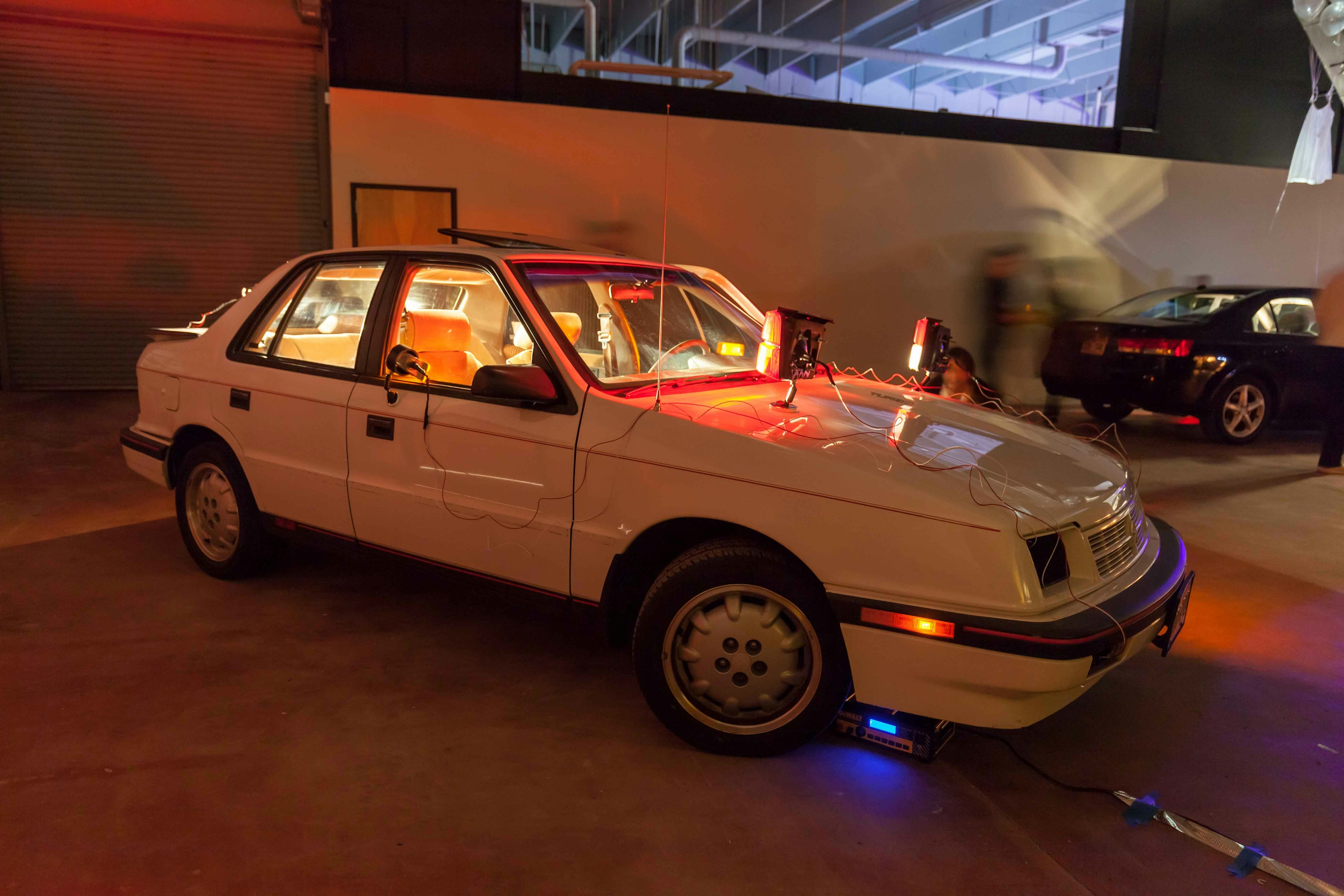
4 Artists Share about the Relationship with their Cars
Graham Eschen on his ‘88 Dodge Shadow
My car is my office, my first impression, my emotional sponge, and an extension of my body itself. It is a physical place that allows my thoughts to manifest outside my mind and where I can speak them aloud. The dodge shadow has sufficient heat, comfortable seating, and a tape deck radio to allow traveling companions and I a safe and open space. It has many moving parts, character, and an aging 2.2 liter turbocharged engine to tinker and distract by exercising my brain. It is my therapist and sparring partner.
Don Fodness on his 70's Indian ME 100 Motorcycle
My relationship to the vehicle I am using for my piece is one of a gift, from my father, and one of personal and family history. It was given to me upon my birth and it was something that my dad hoped would teach me how to ride a motorcycle, introduce me to the basic combustion engine, and become a bonding tool for the two of us. The motorcycle is a rare small (100 cc) Indian two stroke from the mid 1970's. It has never run in my lifetime as it has always needed a specific part. I lived with my father on his farm in Minnesota during the summers (and would live with my mom in Colorado during the school year). One summer as a boy, I started taking it apart to repair it but never completed the job, so it sat all year in one of my dad's Quonsets. The next summer I was not able to pick up where I left off, and as time went on, I lost interest in the project and it continued to sit in the Quonset. Year after year my dad often reminded me about it, and while I always maintained an affection for the motorcycle as a form, and as a gift, I never really had the same desire to completely repair and restore it as he did. As an adult I decided I would keep it around as a form and maybe end up using it as materials in art as a way to exercise my ownership of the gift, and my independence from my father's desires for how I live my life. I have ended up using parts of this bike in my sculpture, and kept other parts in the studio as talisman to protect my creative space. My dad is currently dying of bone cancer and as I come to terms with his mortality, I will dismantle the motorcycle entirely and separate out the parts that I want to continue to keep, or use in my art, and shed the rest.
Chrissy Espinoza on her ‘07 Hyundai Sonata
My relationship to my car is a love, hate relationship. One of my sole reasons for having a car is for transportation to and from work, which is very stressful to me as I am stuck in traffic for 2 hours a day, sometimes longer, just traveling from my home to my job and vice versa. I try not to drive at all on the weekends as this is my time to try and relax, and I associate some of my stress with driving my car. I also have a heavy presence of death while I drive my car, like a ghost that floats above me. The only sense of freedom and retreat that I get from my car is when I go on road trips and she accompanies me on my adventures to new and amazing places that inspire me to create artwork. My car is an object that causes me stress but it is also a tool that reliefs my stress through escapism; it's like I am in a state of cognitive dissonance about my car.
Theresa Anderson on her ‘12 Toyota Rav4
Raised in a very strict, misogynistic, Roman Catholic family, my vehicle has always been a source of freedom, power, and escape. My first car was a 1976 Plymouth Fury- 440 engine, dual exhaust, with a choke on the dashboard. I bought it with money I scraped together from legal and illegal jobs. That gas-guzzler was always breaking down but it allowed me to work in the city as a teenager and move out of my parent’s house at seventeen.
On the flip side, as a woman, I’ve always worried about my safety. When I’m on the road my survival is dependant upon the fitness of my vehicle. There was one night coming home from work that a guy in a huge truck followed me to parents house and was threatening me. He left when my Dad came out in his boxers with his shotgun. I was lucky to make it home. I’ve had to hitchhike in the dark after vehicles have broken down. Drive fast away from weird gas stations in small blip-towns when I’m driving cross-country delivering artwork.
Measuring tape and Consumer Reports in hand, I chose my current car as a tool to transport artwork. How versatile is the back end? Can I take out or flip flat the seats? How does the back door swing out? How reliable is the make and model?
I’ve been debating the space for the performance, some kind of cuddle/ site conditioner/ cats meowing on end, for over a year. This work is based on a historical story about Catholic Nuns from “middle age France who collectively went out into the surrounding village and meowed as cats, both as both a signal of distress and of cathartic release from the daily constraints they experienced. Their parents had forced them into the convent with compulsory celibacy, vows of poverty, and demanding physical labor. During this time, it was widely believed that certain animals, such as wolves, could possess humans.
In France, cats were particularly despised, as they were considered familiar with the Devil. The surrounding Christian neighborhood heard, with equal chagrin and astonishment, this daily cat-concert, which did not cease until all the nuns were informed that a company of soldiers were placed by the police before the entrance of the convent, and that they were provided with rods, and would continue whipping them until they promised not to meow any more. Even though it has a sad ending, I love and relate to this story about power and disruption.
When Cortney Stell invited me to create an experimental artwork for Drive-In Car Culture, I finally understood that the site for cats meowing on end is my vehicle somewhere on the road.
Venture out. Be powerful.